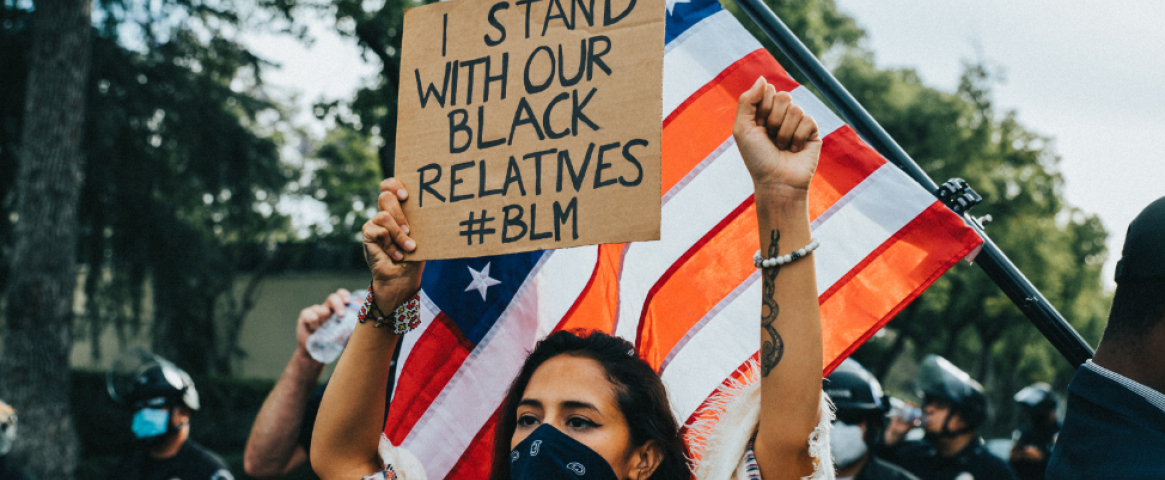By Elyse DeFranco
2020 has been an undeniably turbulent year, with civil rights protests emerging amidst a devastating pandemic, and an economic crash not seen in decades. These events have emerged from seemingly immediate and unpredictable triggers, such as the killing of George Floyd by a Minnesota police officer, and a virus that jumped the species barrier. But some scientists say that the current level of civil unrest was predictable.
The past decade has seen a dramatic increase in socio-political instability in the U.S. and western Europe, leading to the intensity of the current moment, researchers report in a preprint posted to SocArXiv on June 14. Their analysis is a follow-up to a 2010 prediction that based on historical cycles of unrest, 2020 would be a year of extreme instability.
The prediction was based on two observations. The first is a historical pattern of surges in instability that occur in roughly 50-year cycles, with the last spike occurring around 1970. The second is a clear increase in destabilizing factors, including economic inequality, a growing youth population, and distrust in state institutions.

Social upheaval often occurs in predictable cycles that coincide with increases in specific economic and social triggers, says cultural anthropologist Peter Turchin, who led the new analysis alongside Andrey Korotayev. As with earthquakes, a buildup of pressure along fault lines, paired with a trigger event, leads to a seismic shift. When living conditions become unbearable and are met with resistance, social and political turbulence motivates the government to implement structural reforms that improve people’s well-being. These reforms are then slowly eroded over time, until resistance resurges. The result: alternating periods dominated by either social unrest or peaceful coexistence.
By analyzing historical data, scientists can examine the structural pressures that repeatedly undermine social resilience, and measure factors that lead to the rise of political instability. For example, economic inequality has been pinpointed as a leading contributing factor in social revolutions throughout history, and it’s been increasing in the U.S. since the 1980s. Other key drivers include an erosion of trust in state institutions, urbanization, and an increasing proportion of young adults in the population.
Another factor that leads to social upheaval: an economy that is unable to provide enough jobs for its university graduates. Historically, this has led to an increase in radical organizations and revolutionary movements, Turchin claims.
A decade ago, Turchin, who studies cultural evolution at the University of Connecticut, used this framework to create a mathematical equation to chart social upheaval. His prediction, described February 2010 in the journal Nature, suggested that the decade between 2010 and 2020 would be one of rapid increase in social instability in the US. Now, he has teamed up with historian Andrey Korotayev from Russia’s HSE University for a retrospective analysis that suggests that the decade played out much as he expected.

By examining data on the occurrence of both peaceful anti-government protests and more violent riots, it is clear that political instability has indeed been increasing in the US since 2010, the researchers show. The trend is similar for the UK, France, Italy, and Spain.
This analysis predates the widespread impacts of COVID-19, as well as this year’s police brutality and associated protests. But these events further exacerbated key drivers of instability, including economic hardship and decreased trust in state institutions, the researchers say.
The study has not undergone peer review, and other researchers point out that it’s difficult to capture and quantify the complexity of the real world. For example, this model doesn’t account for key social issues such as gun control, abortion rights, and race relations that are often major variables leading to political instability, says Gizachew Tiruneh, a political scientist at the University of Central Arkansas.
It also doesn’t account for the ways that social upheaval can spill across borders — like the influence that refugee migration from neighboring countries played in the Brexit vote, says Erin McCauley, a sociologist and doctoral candidate at Cornell University.
The current context in which we’re reading the paper makes the role of social issues such as racial inequality and migration more pressing, McCauley says.
Still, the analysis demonstrates that the past decade played out much as Turchin forecasted. That may provide hope for reforming problematic policies, Turchin says. “The successful prediction from the model suggests that it is correct about the deep structural forces for instability, which means that we can use the model to figure out how to get out of our current predicament with the least amount of bloodshed.”
Elyse DeFranco is an ecologist and writer based in the San Francisco bay area. She can be reached at elyse.defranco@gmail.com.
This story was produced as part of NASW's David Perlman Summer Mentoring Program, which was launched in 2020 by our Education Committee. DeFranco was mentored by Laurel Hamers.




